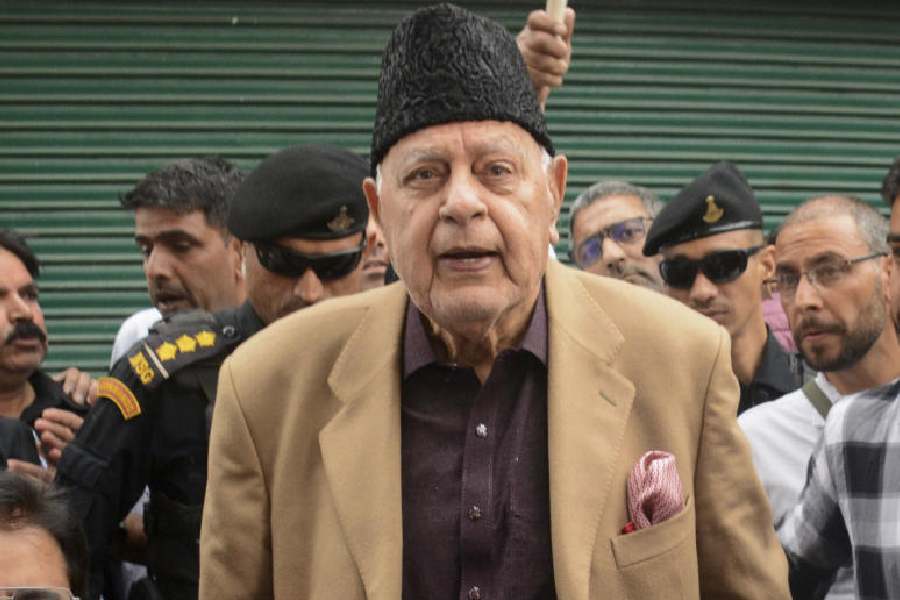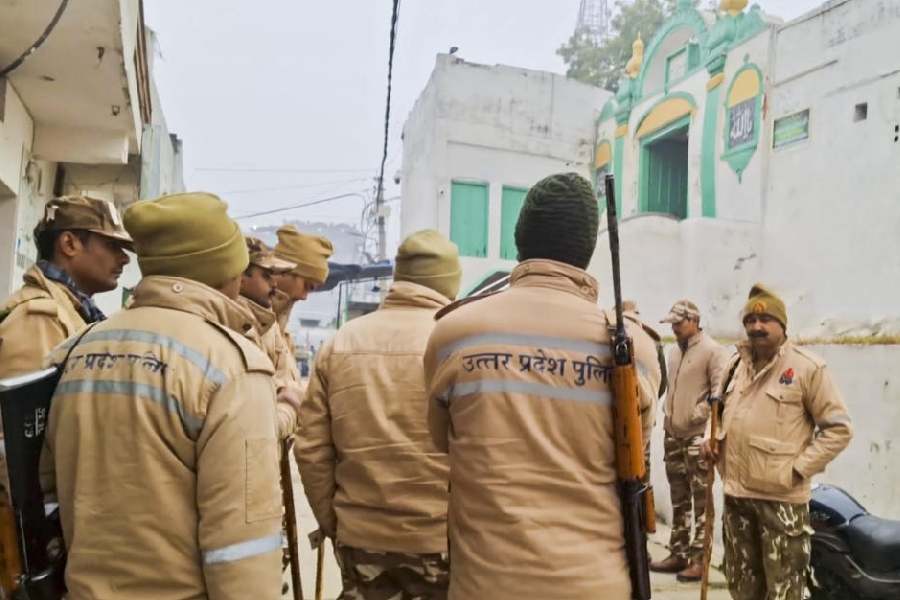Sharmila Biswas, one of Odissi’s best choreographers today, brought forth some exquisite new work in the festival of dance, Story Tellers, presented by her institution, Odissi Vision and Movement Centre, at the G.D. Birla Sabhaghar recently. Constantly
playing with form and content, devising new dance out of traditional material, culling music from social and religious practices of Odisha, varying the drapes of the sari and the dhoti to make it less dramatic and more contemporary, she stuns with the beauty and the range of her art.
Among the highlights of the first evening called Pagdandi was the delicately spun Kundalika created out of a basic technique of Odissi, its 22 spin-and-turn patterns collectively called Bhramaris. An uncannily expressive dance piece was performed hypnotically by the luminous and self-possessed Monami Nandy, the movements disciplined and lucid. She conjured her own poetry from the abstraction of pure movement. Her astonishing grace, athletic elegance, and accuracy lent vibrancy to the distinctive and powerful choreography. If the use of light had been less, like it was chasing the dancer a tad unsuccessfully, Kundalika would have been more visceral.
Divine Puppeteer (picture, left), another high spot of the festival, was a tightly detailed piece revolving around a Telugu sankeertana by Annamacharya that speaks of the power that controls human destiny. The intricately textured metaphor of puppets and their controller, danced with grace and care by Biswas herself, was a fascinating lesson in abhinaya. Delicately lyrical in its interplay of gestures and facial expressions, the piece was epic in its telling of a complex yet accessible story of divine will and submission to it.
Chitragati (picture, right) presented at Gyan Manch recently featured a mercurial work, Being Herself, by Shashwati Garai Ghosh. In telling the tale of a dusky woman who lived life on her own terms until love came to overwhelm her and took everything away, Garai Ghosh is magical. She layers the Tagore song, “Krishnakoli ami tarei boli”, upon the story of Surpanakha, onto which there is an overlay of her dance idiom informed by her training in classical Odissi. She has a captivating stage presence as she swells with power and bristles with anger and hurt. She is fierce and determined, her body quivering with emotion as she pursues her love, dressed up in finery. Stark in her expression of desire in the crepuscular stage light, she allows it to pulsate through her body. Although no good comes of her love, this woman does not allow circumstances to get the better of her. She listens to the voice inside her that urges her to be herself.
Chitragati also featured the Kathak practitioner, Sohini Debnath, whose interpretation of a kirtan in the piece, Mathur, questioned the presumptions around the eternally waiting Radha. Her performance offered a glimpse of her technical virtuosity. Sthapana by the Bharatanatyam dancer, Rajdeep Banerjee, was created as a dialogue between Bharat and his mother, Kaikeyi.
Rajib Bhattacharya’s institution, Srijan Chhanda, recently presented Guru Smaranam at the Indian Council for Cultural Relations auditorium to celebrate Guru Kelucharan Mohapatra. Ratikant Mohapatra, the legend’s son, presented Shabari. His portrayal of the archetype of unconditional devotion of an old and infirm woman with a bent back and a body quaking with age was moving. The performance of Kuru Yadu Nandana by the Kathak exponent, Saswati Sen, was deeply rooted in the abhinaya style of her guru, Birju Maharaj.











